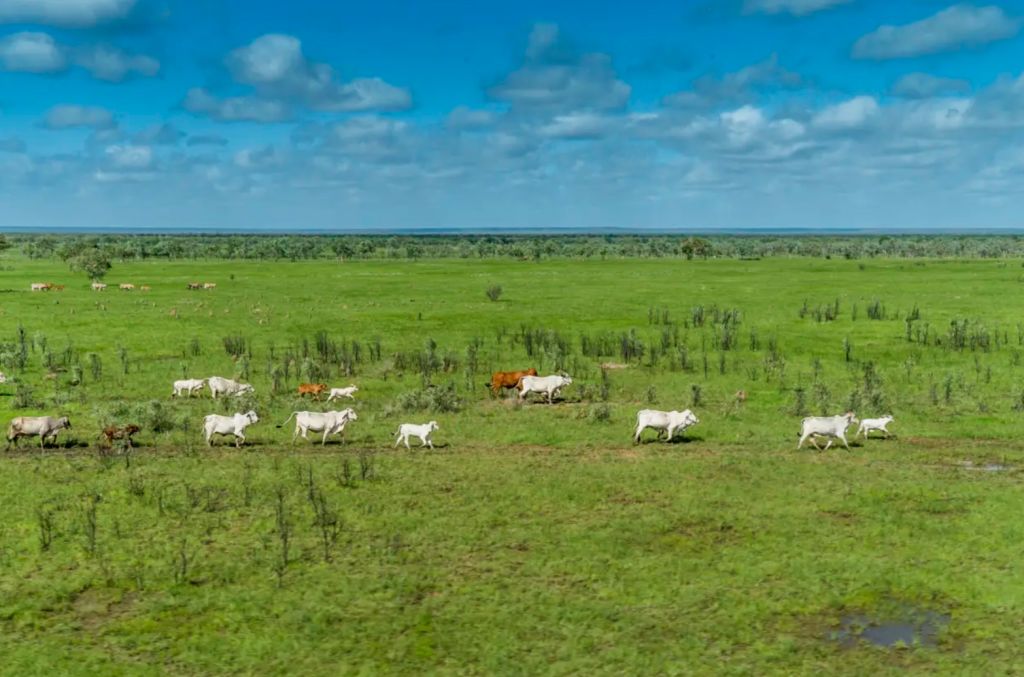
Triple dip La Nina to lift farmland prices, but not everywhere
A third consecutive La Niña summer of heavy rainfall could drive up already heightened farmland prices in regions like Northern Australia as confident livestock producers look to expand, but it could also inhibit transactions in flood-prone areas and damage some crops, economists and farming experts say.
The Bureau of Meteorology upgraded its La Niña “watch” to a La Niña “alert” on August 16 meaning there is now about a 70 per cent chance of a rare “triple dip” La Niña bringing with it heavier rainfall to eastern and central Australia and a wetter start to the northern wet season.
“A third La Nina summer will be nationally positive [for farm values], but there will be nuances at a local level,” said Dr Jared Greenville, executive director at ABARES, the science and economic research division of the Department of Agriculture.
With many farmers sitting on already healthy balance sheets thanks to two years of record production, high commodity prices and surges in rural property values, a third season of plentiful irrigation will lift confidence levels and drive expansion efforts, Dr Greenville said.
In addition, with farm equity levels “really high”, and debt servicing ratios remaining at some of their lowest levels on record, farmers are in pretty good shape to cope with rising interest rates.
“People buying properties have higher levels of profitability and can value the land [they are buying] higher,” Dr Greenville said.
According to ABARES, average cropping farm income rose 28 per cent last financial year to $619,000 while livestock farms enjoyed a 10 per cent rise to $202,000 – with both significantly higher than the 10-year average.
Cheaper and more plentiful supply of water will be another benefit of a third summer of La Niña offsetting increases in borrowing costs and other rising input costs such as fertiliser and labour.
In the southern Murray-Darling Basin, ABARES expects average water allocation prices to fall to $58 per megalitre this financial year compared with $67 in the prior year and a peak price of almost $1000 during the height of the last drought in December 2019.
However, La Niña will also bring with it heightened risk of localised flooding, while a late wet finish to summer could result in a downgrade to wheat prices and other crops, though offset by prices being already high.
These concerns were noted in the full-year results released last week. ASX-listed fruit and vegetable giant Costa Group said, “extreme weather conditions, including a prolonged La Niña period, have to date impacted quality, premium product pack out rates and increased farming costs across all three growing regions”.
Climate change may increase the frequency of El Niño and La Niña events, as well as their intensity, while also changing rainfall patterns, according to scientists at the National Oceanic and Atmospheric Administration, a US government scientific and regulatory agency.
However, Australian farmers have become “very professional and entrepreneurial” in their ability to deal with “extreme [climate] volatility”. Martin Davies, head of $15 billion global agricultural fund manager Nuveen Natural Capital told the Financial Review.
“Whilst a triple La Niña is historically a very rare occurrence, our industry well understands the cycle of El Niño-Southern Oscillation events and how it impacts different regions,” said Tom Russo, head of real estate at rural specialists Elders.
“Producers aim to take advantage of good years and minimise downside in others as we move through those cycles. This is well understood in the context of long-term farmland values and I wouldn’t expect it to have a material positive or negative impact.
“Having said that, some sectors will benefit, whilst others will face short-term challenges. For example, the North Australia beef production industry will benefit substantially from available pasture and this should serve to underpin the momentum in the market.
“Conversely, high flood potential areas or regions where crop quality could be impacted may experience some buyer hesitancy in the short term,” Mr Russo said.
Simon Dundon, general manager of sales and distribution at Rural Bank, said a third year of La Niña would not have much effect on land values, with interest rates and input costs a bigger factor on supply and demand.
However, he noted land prices were still rising this year despite a 30-40 per cent increase in input costs. A lot of money is expected to come into the farming sector following what is expected to be another bumper financial year, with $80 billion of total farmgate production forecast, the second-highest on record.
“We are seeing record prices in the regions based on the [finance] applications coming through,” Mr Dundan said.
While rain through summer would be an overall good thing for the north of the country, the last thing growers on the East Coast wanted was too much rain through the harvest period, which would damage crops, Mr Dundan said.
“The last thing they would want to see is flooding,” he said.











